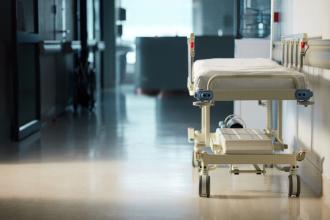It seems like such a long journey…
 |
| Dr Kathleen Ross |
Are we there yet? At this stage in our COVID-19 response, a question like this one is perhaps not a fair one to ask, as the road ahead, and our eventual destination, are constantly changing like the shifting of sand. The pandemic response has been relatively successful in BC, though not without its share of difficulties. This success is in large part due to the strength of collaboration between our physicians, other allied providers, our Provincial Health Officer Dr Henry, our health care administration, and the hard work of British Columbians adhering to public health advice. The effectiveness of our response was particularly noticeable in the suspension and subsequent ramping up of surgical procedures to build capacity for COVID-19 patients, and the creation of PPE protocols to optimize use when our supplies were most critical. Despite our relative success, there are several processes worth examining for potential improvement when it comes to our response in BC and across Canada.
Currently, our access to PPE is reasonable, in both our facilities and community offices, with the exception of impermeable gowns. We can obtain some supplies through our usual suppliers, although at times at a higher cost. When obtaining PPE items through prepandemic channels is not possible, we can source inventory from our health authorities via various agreed-upon processes across BC. Whether this level of supply access will remain dependable during a second wave is unclear. We have at times had as little as a 10-day supply of certain masks and glove sizes at my facility. We are currently holding steady at our present lower burn rate, but I am concerned about higher usage rates in the event of a second wave. Where will that leave our community-based physicians?
As we know, health care in Canada is publicly funded, but largely privately delivered by physicians. Community-based physicians have found the financial burden of the increased PPE demand challenging, even with a large-scale shift to virtual care. Many assessments and procedures, such as vaccines, wound care, surgical assessments or procedures, and obstetrical care, still require in-person delivery, and front-line clinic capacity is limited.
Rising case numbers and growing volumes of contacts in self-isolation in BC throughout August highlighted the need for ongoing public health supports. Although testing capacity has increased across Canada since the pandemic began, a consistent supply of test kits is still lacking, particularly the smaller red-capped kits best suited for children. The numbers we test are not truly declining, and test kit usage is likely to increase. Ongoing streamlining and centralization of testing is likely needed to ensure the entire testing process is optimized.
We know that identifying and isolating individuals exposed to COVID-19 reduces spread, and yet, funding for contact tracing capacity is (in my view) insufficient. Theoretically, an increase in positive cases could further erode the capability of our public health infrastructure to limit spread.
Routine primary care assessments, screening, and treatments have declined, and our patients often wait too long before seeking care. Our emergency rooms continue to see late-presentation cases carrying significant consequences, such as untreated myocardial infarction, stroke, and new cancer diagnoses. Primary vaccination series have fallen behind due to the loss of both public health and primary care clinic time stemming from a lack of PPE, human resources, and safe clinic infrastructure. We need a catch-up plan for these services in the same way we ramped up surgical services back to baseline. To do this, we must support primary care with increased human resources, PPE, and necessary infrastructure to keep patients and providers safe.
Finally, questions have recently arisen around the lack of a domestic vaccine supply, and equitable distribution of available vaccines across Canada. Flu vaccines arrive much later in some areas and in some provinces than others. There are additional serious related concerns surrounding our impending flu and pneumonia season, the safety of school reopening with undervaccinated children, and of course, access and delivery of a SARS-CoV-2 vaccine should one become available.
So, let’s not take our foot off the gas just yet. We must continue to push for equitable, steady access to necessary supplies, testing, contact tracing, vaccination processes, and safe clinic practices. We are not there yet.
—Kathleen Ross, MD
Doctors of BC President

